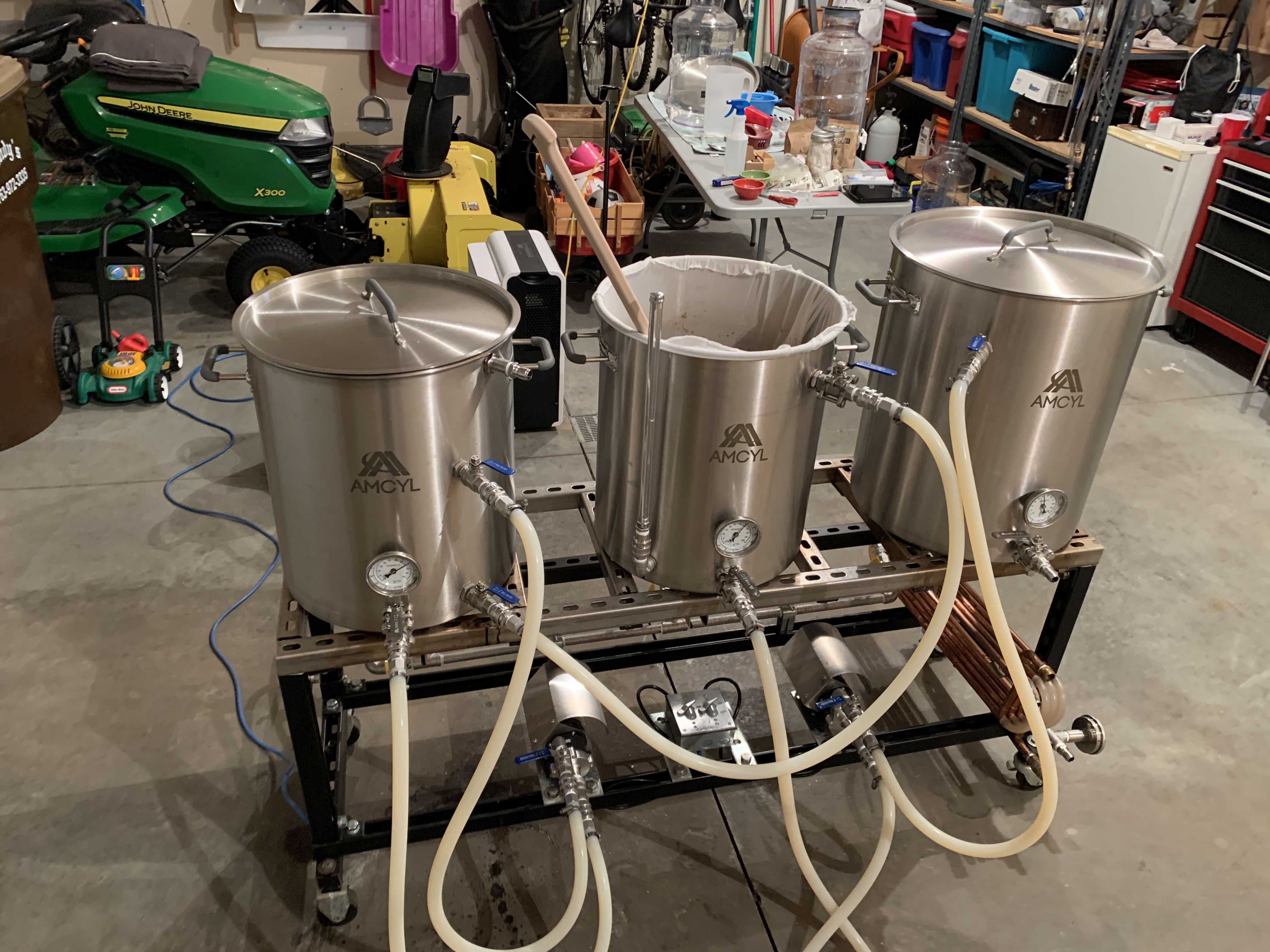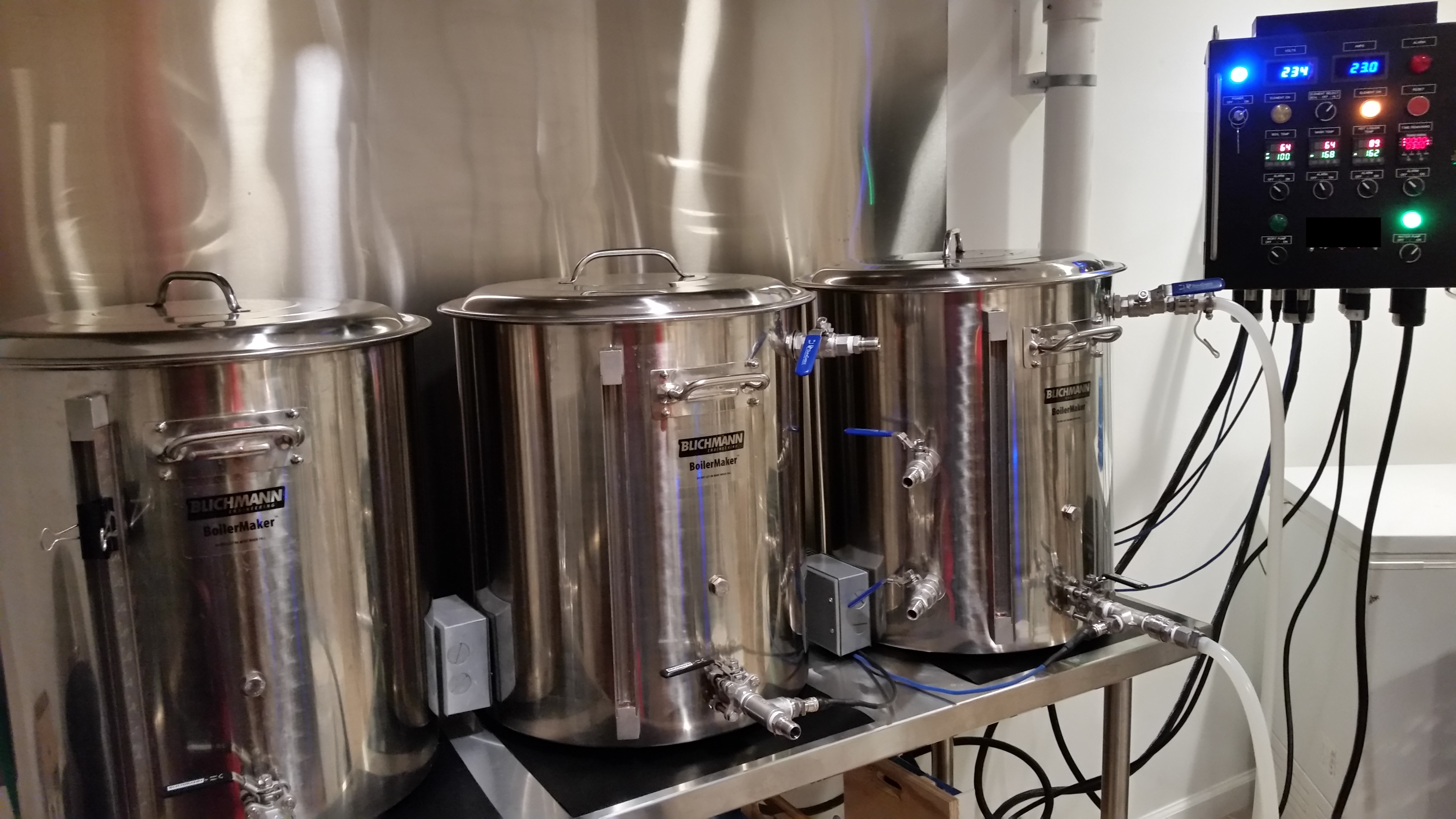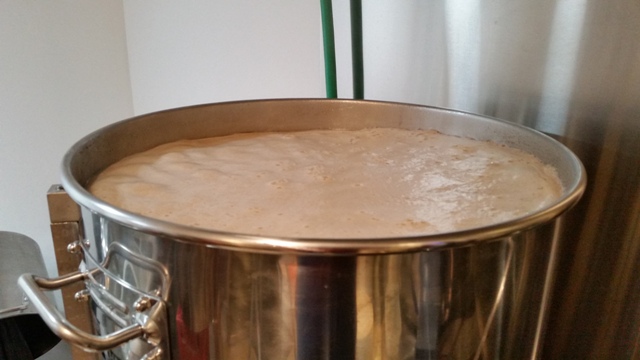schnackshack
Member
- Joined
- Jan 11, 2017
- Messages
- 19
- Reaction score
- 4
Hey everyone!
Looking for some advice, insights, opinions here.
My current setup consists of a propane HERMS system, which has been a lot of fun to use, but as I get deeper into the world of beer making, I want that control E-brewing has to offer, without compromising my ability to produce 10 gallon batches. I also want to move away from a gas powered system.
I have two 15gal kettles (HLT, MLT) and a 20gal Boil kettle, 2 brew pumps, hoses, auto-sparge, counterflow chiller, and a custom built SS top brew-stand. All told, a good amount of money into my system. But still, no electronic control.

Way I see it, I have two options. (I'm open to more that I may not be aware of)
For me both have pro's and con's.
Brewery footprint matters to me. So does recipe freedom. Cleanup time should improve or stay the same.
I have no experience with either types of E-brewing setups but if you're willing to share your thoughts, I would appreciate it.
Thanks!!
Looking for some advice, insights, opinions here.
My current setup consists of a propane HERMS system, which has been a lot of fun to use, but as I get deeper into the world of beer making, I want that control E-brewing has to offer, without compromising my ability to produce 10 gallon batches. I also want to move away from a gas powered system.
I have two 15gal kettles (HLT, MLT) and a 20gal Boil kettle, 2 brew pumps, hoses, auto-sparge, counterflow chiller, and a custom built SS top brew-stand. All told, a good amount of money into my system. But still, no electronic control.

Way I see it, I have two options. (I'm open to more that I may not be aware of)
- Convert: Add element heat to all three kettles, add thermocouples and probes, build E-controller, wire in 240V. All for about $2,000
- Replace: buy an All-in-one E-brew setup, like the BrewZilla 17gal, wire in 240V. All for about $1,000.
For me both have pro's and con's.
Brewery footprint matters to me. So does recipe freedom. Cleanup time should improve or stay the same.
I have no experience with either types of E-brewing setups but if you're willing to share your thoughts, I would appreciate it.
Thanks!!




